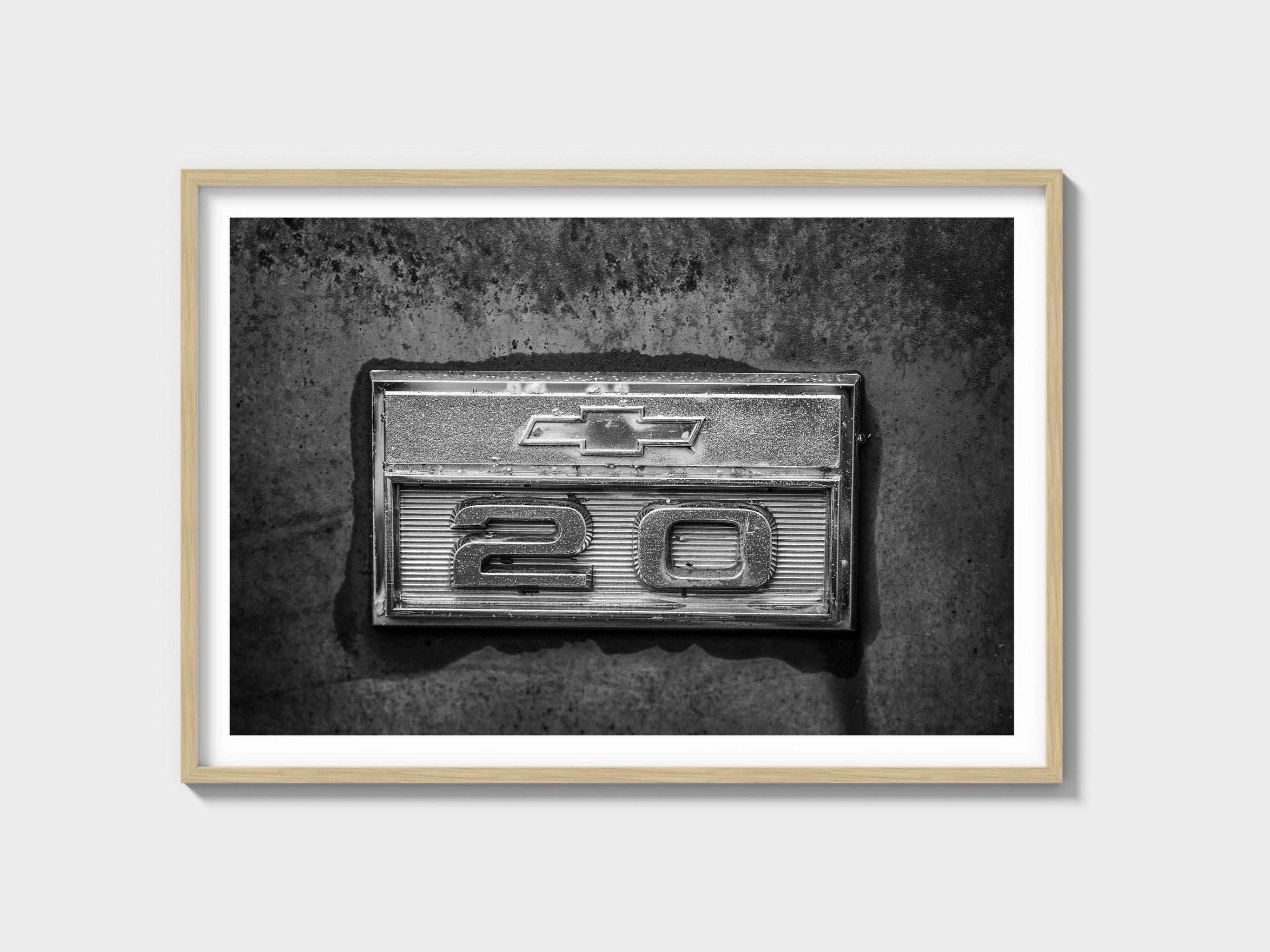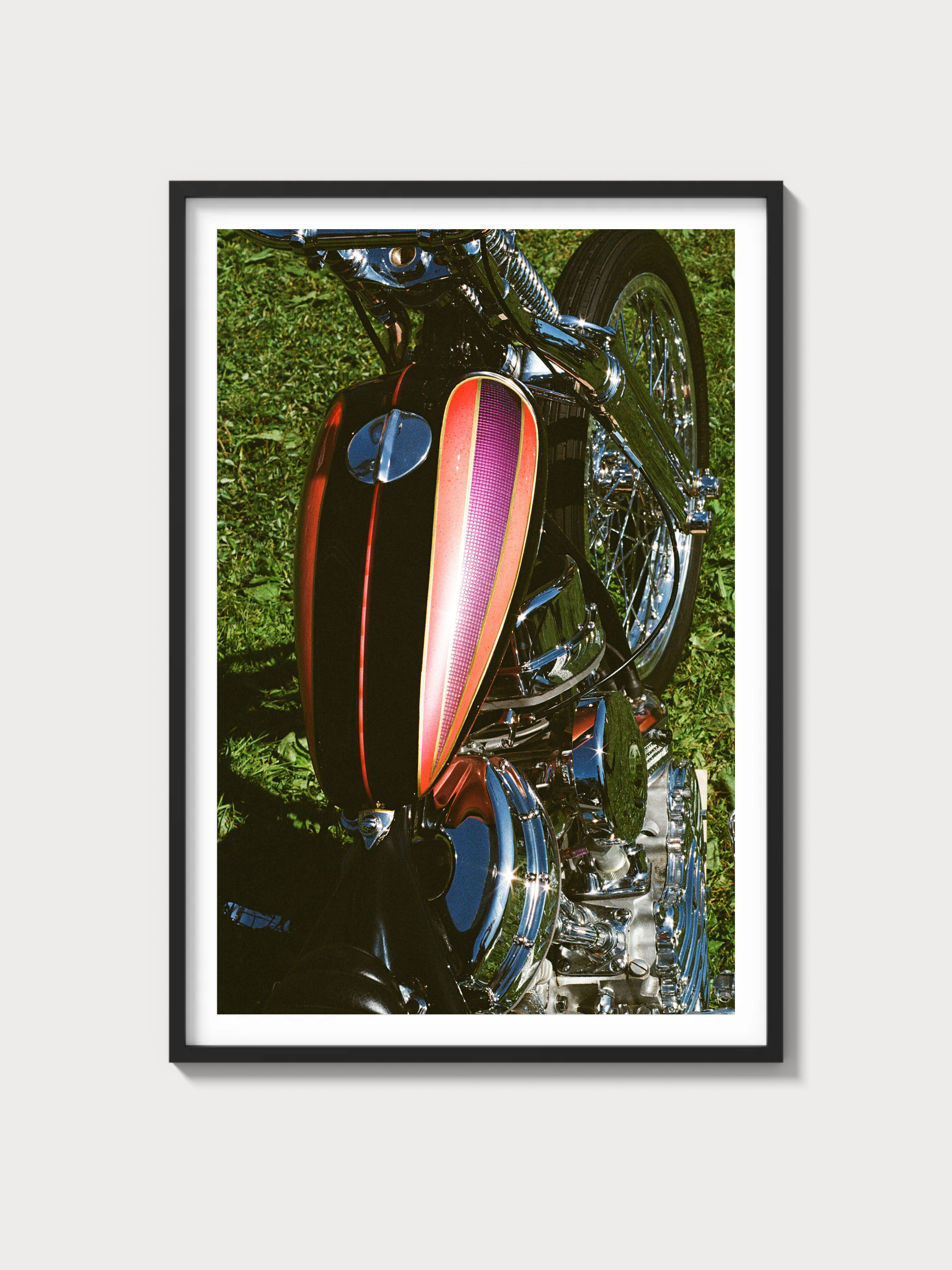2015–2020 Chevrolet Tahoe Base (4th Gen, K2XX) — An Enthusiast’s Deep Dive
Historical Context and Development Background
The fourth-generation Chevrolet Tahoe arrived for 2015 on GM’s K2XX architecture, sharing its core structure with the contemporary Suburban and Silverado. The program focused on greater refinement, cabin isolation, and efficiency while retaining the body-on-frame durability that underpins the Tahoe’s reputation. A stiffer fully boxed frame, extensive sound-deadening, inlaid doors, and attention to aero (e.g., tighter panel gaps and active grille shutters on certain configurations) elevated it beyond its GMT900 predecessor. Aluminum was selectively applied where it made sense for mass and corrosion—most notably the hood and liftgate—without compromising the robust ladder-frame ethos.
Inside, the redesign ushered in a car-like dashboard, improved ergonomics, and meaningful tech upgrades, including GM’s MyLink infotainment, available driver-assistance suites, and a more versatile seating layout. Critically, the Base—sold in the period as the LS—could be optioned with a front 40/20/40 split bench to seat up to nine, a rarity among modern SUVs and a nod to its fleet and family utility.
Competition over this era was fierce. Ford’s Expedition offered an independent rear suspension and turbocharged V6 torque; Toyota’s Sequoia countered with long-haul durability and a naturally aspirated V8; Nissan’s switch to the Patrol-based Armada brought a refined 5.6L DOHC V8 and a global SUV lineage. Against this landscape, the Tahoe’s value proposition hinged on its broad dealer network, proven small-block V8, and a towing-focused chassis tune that preserved the confident, truck-like feel its buyers expect.
Engine and Technical Specifications
The Base/LS specification centers on GM’s Gen V small-block: the EcoTec3 5.3-liter L83. This all-aluminum pushrod V8 integrates direct injection, variable valve timing, and cylinder deactivation (Active Fuel Management) for improved efficiency without resorting to turbocharging. In this application it’s paired exclusively to the 6L80 six-speed automatic for the entire 2015–2020 run.
| Item | Specification |
|---|---|
| Engine configuration | 90° V8, OHV (2 valves/cyl), aluminum block and heads |
| Displacement | 5,328 cc (5.3 liters) |
| Induction type | Naturally aspirated |
| Horsepower | 355 hp @ 5,600 rpm (SAE) |
| Torque | 383 lb-ft @ 4,100 rpm (SAE) |
| Redline | ≈5,800 rpm (fuel cut) |
| Fuel system | Direct injection; 87–91 AKI unleaded recommended per market |
| Compression ratio | 11.0:1 |
| Bore x stroke | 3.78 in x 3.62 in (96.0 mm x 92.0 mm) |
| Cylinder deactivation | Active Fuel Management (V4 mode under light load) |
| Lubricant spec | Dexos1-approved 0W-20 |
| Cooling | Cross-flow radiator; engine-driven mechanical fan with electric assist (depending on package) |
Driving Experience and Handling Dynamics
In Base/LS trim, the Tahoe’s dynamics are defined by a coherent, unpretentious calibration. The steering is electrically assisted but weighted to feel steady on-center—exactly what you want in a long-wheelbase highway cruiser. The 6L80 six-speed shifts with a relaxed cadence in default mode, holding gears sensibly under part throttle and pairing well with the small-block’s broad torque plateau. Tow/Haul mode tidies the logic, reducing busy downshifts and upping shift firmness when there’s mass on the hitch.
Suspension is a classic full-size GM formula: short/long-arm front independent with coil-over shocks and a stabilizer bar, and a five-link live rear axle with coils. Without the magnetorheological dampers reserved for upscale trims, the Base ride is composed rather than plush, aided by modest 18-inch wheels and tall-sidewall tires that avoid the impact harshness of the 20–22-inch packages. Roll is present but disciplined; grip and braking are entirely adequate for the mission, with predictable understeer arriving early and a reassuringly planted rear axle over broken surfaces. Throttle response is clean, and AFM handoffs (V8 to V4 and back) are generally seamless at steady speeds.
Full Performance Specifications
The following figures reflect typical results observed by period instrumented testing for 5.3L/6-speed Tahoes; exact outcomes vary with drivetrain (2WD vs 4WD), options, and test conditions.
| Metric | 2015–2020 Tahoe Base (LS, 5.3L/6L80) |
|---|---|
| 0–60 mph | Approx. 7.0–7.5 seconds (2WD quicker than 4WD) |
| Quarter-mile | Approx. mid-15s @ low-90s mph |
| Top speed | Electronically limited; commonly ~113 mph with H-rated tires |
| Curb weight | ~5,355–5,631 lb (LS 2WD–4WD typical) |
| Layout | Front-engine; rear-wheel drive or Autotrac 4WD |
| Brakes | Four-wheel disc; approx. 13.0 in front / 13.6 in rear rotors; ABS |
| Suspension | Front SLA/coil-over; rear five-link/live axle with coils |
| Gearbox | Hydramatic 6L80 six-speed automatic with Tow/Haul |
| Final-drive ratios | 3.08 standard; 3.42 with Max Trailering Package |
Variant Breakdown: Trims, Editions, and Fleet Derivatives
While this article focuses on the Base (LS), the fourth-gen Tahoe line was broad. Trim-specific production totals were not publicly disclosed by Chevrolet; differences below capture the meaningful hardware and equipment splits enthusiasts care about.
| Trim/Edition | Engine/Driveline | Key Hardware/Features | Production Notes |
|---|---|---|---|
| Base (LS) | 5.3L L83 V8; 6L80; RWD or 4WD | 18-in wheels, cloth interior, optional 9-passenger seating (front bench), standard suspension, available Max Trailering Package (3.42 axle) | Trim-specific production not published |
| LT | 5.3L L83 V8; 6L80; RWD/4WD | Leather, upgraded audio and safety suites, optional Z71 Off-Road package (4WD), 20-in wheels available | Trim-specific production not published |
| LTZ (early years) | 5.3L standard; 6.2L L86 optional late in run via performance packages | Magnetic Ride Control, more driver aids, upscale interior | Trim-specific production not published |
| Premier (replaced LTZ mid-cycle) | 5.3L standard; 6.2L available with 10-speed on certain packages | Top luxury trim; Magnetic Ride Control, 20–22-in wheels | Trim-specific production not published |
| RST (Rally Sport Truck) package | Primarily 6.2L/10-speed on performance spec; 5.3L cosmetic also seen | Monochrome exterior, larger wheels/tires, available 6-piston Brembos and performance exhaust | Package volumes not published |
| Z71 Off-Road (on LT, 4WD) | 5.3L; 6L80; 4WD with two-speed transfer case | Skid plates, specific wheels/tires, recovery hooks, unique fascia | Package volumes not published |
| PPV/SSV (Police/Spec Service) | 5.3L; duty-calibrated 6L80; RWD/4WD | Heavy-duty cooling, alternator, brakes; column shifter; simplified interior; unique tire-speed ratings | Fleet production; trim-specific totals not published |
| Regional/Specials (e.g., Texas Edition, Midnight) | 5.3L; cosmetic/performance content varies | Badging, wheel/tire packages, appearance tweaks | Package volumes not published |
Ownership Notes: Maintenance, Parts, and Restoration
- Service intervals: Follow GM’s oil life monitor with Dexos1 0W-20; many owners see 5,000–7,500-mile intervals depending on duty cycle. Severe use benefits from shorter cadence.
- Transmission/transfer case: 6L80 fluid/filter service is prudent under heavy use; transfer case and differentials appreciate regular fluid refreshes, especially with frequent towing or 4WD use.
- Cooling and HVAC: Some K2XX trucks experienced A/C condenser leaks; GM issued service bulletins and special coverage for affected VIN ranges. Inspect for dye residue and verify cold vent temps.
- Brake assist: Vacuum pump degradation on certain builds led to reduced assist concerns; campaigns and updated parts were deployed. Confirm recall/special coverage completion by VIN.
- AFM lifters: Isolated lifter collapse complaints exist across Gen V small-blocks. Quality oil, timely changes, and correct viscosity are the best preventive measures; listen for misfire/rough idle at start-up.
- Fuel system and carbon: Direct injection engines can accumulate intake valve deposits over long intervals; quality fuels and occasional high-load operation help. Walnut blasting is a known remedy if symptoms appear.
- Suspension/tires: The Base’s 18-inch setup is kinder to bushings and shocks than the big-wheel packages. Alignment and tire rotations at 5–7k miles keep the chassis happy.
- Parts availability: Outstanding. The Tahoe shares much with the Silverado and Suburban, and the aftermarket supports everything from OE-equivalent components to towing/brake upgrades.
- Restoration difficulty: Approachable. Body-on-frame construction, widely available service literature, and excellent parts support make long-term stewardship straightforward.
Cultural Relevance and Market Footprint
The fourth-gen Tahoe became the default American full-size SUV—ubiquitous in suburban driveways, on ranch roads, and in government fleets. In film and television it frequently plays the role of blacked-out federal transport, as evidenced by its presence in contemporary action thrillers and crime dramas of the era. For collectors, the Base/LS is not the speculative play—that mantle belongs to rare 6.2L Premier/RST builds and niche fleet specials—but a clean, low-mile LS with the nine-passenger front bench carries a certain utilitarian charm that’s increasingly uncommon.
Public auction results for K2XX Tahoes have varied primarily with mileage, drivetrain, and spec, with ex-fleet PPV/SSV examples typically at the bottom of the price curve and well-kept, private-party Premier 6.2L trucks at the top. Condition, service history, and options (Max Trailering Package, seating configuration) materially influence outcomes.
Frequently Asked Questions
Is the 2015–2020 Tahoe Base (LS) reliable?
Yes, in general. The 5.3L EcoTec3 small-block and 6L80 automatic are well-understood. Known items to verify include A/C condenser integrity, brake vacuum pump updates, and attentive fluid service. Lifter issues are uncommon but documented; a smooth idle and clean service history are good signs.
What’s the difference between Base (LS) and higher trims?
LS emphasizes utility: cloth seats, 18-inch wheels, and the option for nine-passenger seating. LT adds leather and more tech; LTZ/Premier bring Magnetic Ride Control and upscale features. Only upper trims/packages offered the 6.2L V8 and 10-speed automatic during this generation.
How quick is the 5.3L Tahoe?
Period testing places 0–60 mph in roughly the low- to mid-7-second range for 5.3L/6-speed trucks, with the quarter-mile landing in the mid-15s. Top speed is typically governed near 113 mph where tire ratings allow.
What’s the towing setup I should look for?
The Max Trailering Package brings a 3.42 axle ratio, enhanced cooling, integrated trailer brake controller, and hitch hardware. It materially improves drivability with heavier trailers compared to the standard 3.08 final drive.
Does the Base have third-row seats?
Yes. All fourth-gen Tahoes have a third row. The LS can be configured for nine passengers with a front bench (rare and sought after by some buyers), or eight with front buckets.
Any common 4WD or drivetrain concerns?
Regular fluid changes in the Autotrac transfer case and differentials minimize wear and quell occasional clunks. Wheel bearings and half-shafts are durable when serviced on schedule and tires are rotated frequently.
Can I get the 6.2L in a Base Tahoe?
No. The 6.2L L86 was packaged with upper trims and performance-oriented editions. The Base/LS was paired with the 5.3L L83 and 6L80 six-speed only for this generation.
What brake hardware does the Base use?
Four-wheel discs with large rotors (approximately 13 inches front and 13.6 inches rear) and ABS. Upgraded multi-piston front calipers were part of select performance packages on appearance-focused trims, not the LS.
How does it compare to the Ford Expedition of the same era?
The Expedition’s independent rear suspension and turbocharged V6 deliver a different character—more rear-end compliance and low-rpm torque swell. The Tahoe counters with classic small-block feel, simpler hardware, and a towing-focused chassis tune. Choice largely hinges on use case and preference.
What are the wheel/tire sizes on the Base?
Typical LS fitment is 18x8.5-inch wheels with 265/65R18 tires. The tall sidewalls aid ride quality and rim durability, particularly on rough roads or when towing.
Specification Summary Tables
Core Technical Snapshot (Base/LS, 2015–2020)
| Category | Detail |
|---|---|
| Platform | K2XX body-on-frame (shared architecture with Suburban/Silverado) |
| Drivetrain | RWD or Autotrac 4WD (two-speed transfer case on 4WD) |
| Transmission | Hydramatic 6L80 6-speed automatic |
| Steering | Electric power-assisted rack-and-pinion |
| Front suspension | Short/long arm, coil-over shocks, stabilizer bar |
| Rear suspension | Five-link live axle with coils |
| Brakes | Ventilated discs front/rear; ABS; stability control |
| Wheels/Tires | 18x8.5-in wheels; 265/65R18 tires (typical LS) |
| Curb weight | ~5,355 lb (2WD) to ~5,631 lb (4WD), equipment-dependent |

















































